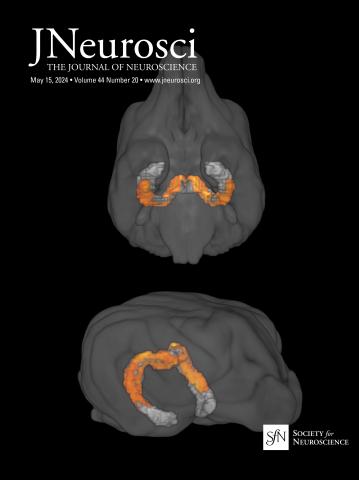老年正常人和阿尔茨海默病患者大脑中单顺反子L1 ORF2 mRNA变异的序列多样性和编码酶差异
IF 4.4
2区 医学
Q1 NEUROSCIENCES
引用次数: 0
摘要
人类大脑中的逆转录酶(RT)活性已经通过体细胞逆转录插入/反转录转位事件推断出来,但实际的内源性酶活性和来源尚不清楚。L1 (LINE-1)逆转录转座子双胞性地表达ORF2,包含RT和核酸内切酶(EN)结构域,以及RNA结合蛋白ORF1,共同实现L1逆转录转座并促进体细胞基因组嵌合体(SGM)。在这里,我们使用酶功能测定、靶向PacBio HiFi长读测序和定量空间转录组学,评估了31例阿尔茨海默病(AD)和非病变(ND)大脑(两性)的大脑皮质样本的内源性RT活性和L1 mRNA多样性。大多数样本中没有预期的双链全长L1转录本,占80%是非编码的。在所有样本中均鉴定出单反式ORF1和ORF2转录本,这与定量空间转录组学鉴定出神经元中ORF2和ORF1表达不一致的结果一致。所有大脑都有RT活性,AD样本显示活性较低,这与晚期AD与老年ND供者的神经元损失一致。脑RT活性在灰质中较高,与神经元ORF2表达增加相关,进一步支持神经元的贡献。值得注意的是,发现了bbb5050蛋白编码polyA+ ORF2序列变异,比在人类参考基因组(hg38)中发现的变异多2倍以上。全长ORF2变体和截断ORF2变体的实验过表达显示出约50倍的RT和约1.3倍的EN活性范围,支持人脑中单顺反电子ORF2变体的内源性功能能力。单顺反子ORF2 mrna的巨大序列多样性可能是rt介导的体细胞基因重组/反插入以及正常和患病大脑中基因组嵌合的功能差异的基础。人脑逆转录酶活性是通过L1的“复制-粘贴生命周期”推断出来的,L1可以通过全长L1 mRNA的自我逆转录转位产生基因组嵌合体。然而,它们在老年和阿尔茨海默病神经元中的存在尚不清楚。我们通过酶活性测定和靶向PacBio测序检测了老年正常人和阿尔茨海默病患者大脑前额叶和内侧颞叶皮层的逆转录酶活性及其与L1的关系。逆转录酶活性普遍存在,但全长L1大部分缺失。相反,数百种不同的、截断的、新的L1 mRNA变体被鉴定出来,实验样本显示了不同的逆转录酶活性。这些数据暗示截断的L1变体是正常和阿尔茨海默病大脑中功能多样化和新型逆转录酶的来源。本文章由计算机程序翻译,如有差异,请以英文原文为准。
Sequence diversity and encoded enzymatic differences of monocistronic L1 ORF2 mRNA variants in the aged normal and Alzheimer's disease brain.
Reverse transcriptase (RT) activity in the human brain has been inferred through somatic retroinsertion/retrotransposition events, however actual endogenous enzymatic activities and sources remain unclear. L1 (LINE-1) retrotransposons bicistronically express ORF2, containing RT and endonuclease (EN) domains, and RNA binding protein ORF1, together enabling L1 retrotransposition and contributing to somatic genomic mosaicism (SGM). Here, we assessed endogenous RT activities and L1 mRNA diversity from cerebral cortical samples of 31 Alzheimer's disease (AD) and non-diseased (ND) brains (both sexes) using enzymatic functional assays, targeted PacBio HiFi long-read sequencing, and quantitative spatial transcriptomics. Expected bicistronic, full-length L1 transcripts were absent from most samples, constituting <0.01% of L1 sequences, of which >80% were non-coding. Monocistronic ORF1 and ORF2 transcripts were identified across all samples, consistent with quantitative spatial transcriptomics that identified discordant ORF2 and ORF1 expression in neurons. All brains had RT activity, with AD samples showing less activity, consistent with neuronal loss of terminal AD vs. aged ND donors. Brain RT activity was higher in grey matter and correlated with increased neuronal ORF2 expression, further supporting neuronal contributions. Remarkably, >550 protein-encoding, polyA+ ORF2 sequence variants were identified, over 2x more than identified in the human reference genome (hg38). Experimental overexpression of full-length and truncated ORF2 variants revealed ∼50-fold RT and ∼1.3-fold EN activity ranges, supporting endogenous functional capacity of monocistronic ORF2 variants in the human brain. The vast sequence diversity of monocistronic ORF2 mRNAs could underlie functional differences in RT-mediated somatic gene recombination/retroinsertion and resulting genomic mosaicism in the normal and diseased brain.Significance Statement Human brain reverse transcriptase activity has been inferred through the "copy-and-paste life-cycle" of L1, which can generate genomic mosaicism via self-retrotransposition via a full-length L1 mRNA. However, their presence in aged and Alzheimer's disease neurons remains unclear. We examined aged normal and Alzheimer's brains for reverse transcriptase activity in prefrontal and medial-temporal cortices and its relationship to L1 via enzymatic activity assays and targeted PacBio sequencing. Reverse transcriptase activity was pervasive, however full-length L1 was largely absent. Instead, hundreds of different, truncated, novel L1 mRNA variants were identified, and experimental sampling revealed diverse reverse transcriptase activities. These data implicate truncated L1 variants as a source of functionally diverse and novel reverse transcriptases in the normal and Alzheimer's disease brain.
求助全文
通过发布文献求助,成功后即可免费获取论文全文。
去求助
来源期刊

Journal of Neuroscience
医学-神经科学
CiteScore
9.30
自引率
3.80%
发文量
1164
审稿时长
12 months
期刊介绍:
JNeurosci (ISSN 0270-6474) is an official journal of the Society for Neuroscience. It is published weekly by the Society, fifty weeks a year, one volume a year. JNeurosci publishes papers on a broad range of topics of general interest to those working on the nervous system. Authors now have an Open Choice option for their published articles
 求助内容:
求助内容: 应助结果提醒方式:
应助结果提醒方式:


